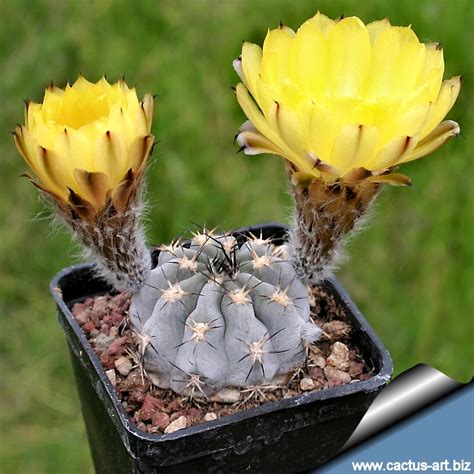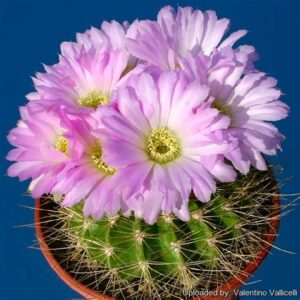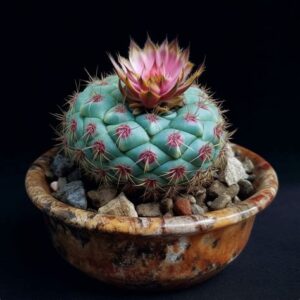When delving into the world of cacti, enthusiasts and casual observers alike often find themselves asking the question: “What is the common name for Acanthocalycium glaucum?” While this species may not enjoy the same fame as its prickly relatives, understanding its characteristics and nuances reveals much about its botanical allure. Prepare to embark on a botanical journey where we demystify the identity of Acanthocalycium glaucum and explore its charming traits.
Acanthocalycium Glaucum: The Name Game
First and foremost, one might wonder whether Acanthocalycium glaucum possesses a universally recognized common name. In the vast lexicon of cacti, many species are adorned with whimsical and memorable nicknames, yet Acanthocalycium glaucum tends to elude this trend. Typically referred to simply as “Acanthocalycium,” this name reflects its genus rather than highlighting any particular commonality that might resonate more readily with the average gardener.
One could playfully ponder: if Acanthocalycium glaucum were a person, what moniker might it choose for itself? Perhaps it would opt for “The Glaucous Wonder” due to its distinct, glaucous (blue-green) coloration that intrigues many horticulturists. Each individual plant may not carry a catchy nickname, but its visual appeal and unique attributes certainly make it stand out among its brittle brethren.
Unraveling the Acanthocalycium Family
To truly appreciate Acanthocalycium glaucum, one must first contextualize it within the expansive family of cacti. Acanthocalycium is a genus characterized by ovoid to cylindrical growth forms, covered in fleshy spines that can vary dramatically among species. These profiles present not only aesthetic interest but also intriguing challenges to cultivation experts. How do the variations in spine structure affect care techniques, or even classification debates among botany enthusiasts?
Understanding the family traits of Acanthocalycium also helps uncover the ecological niches these plants inhabit. They are primarily native to South America, specifically Argentina, where they flourish in rocky, well-draining substrates. Their natural habitats often influence their adaptations, and part of the allure for gardeners is replicating these conditions successfully.
The Aesthetic Appeal of Acanthocalycium Glaucum
A key component of any plant’s identity is its visual presentation. Acanthocalycium glaucum is particularly notable for its impressive physical attributes. The plant typically showcases a striking blue-green body, which is not only an indication of its health but also an element of style in any garden landscape. Its rounded shape, often described as globose or slightly elongated, provides a plump aesthetic and makes it an appealing choice for collectors.
One prominent feature of Acanthocalycium glaucum is its collection of spines, which can come in various colors and densities. These spines are not merely defensive mechanisms; they add texture and dimension to the plant. The word “Acanthocalycium” itself translates to ‘thorny calyx,’ emphasizing the significance of these spines in both the plant’s survival and its ornamental value.
Furthermore, Acanthocalycium glaucum produces lovely, funnel-shaped flowers that emerge from the crown of the plant during blooming season, adding another layer of visual delight. The blossoms, often bright pink or yellow, contrast beautifully with the bluish hue of the body, creating a breathtaking spectacle that captivates those fortunate enough to witness it.
Cultivation Challenges and Growing Tips
For aspiring cultivators, Acanthocalycium glaucum presents both exciting opportunities and inevitable challenges. As with any cactus, understanding their specific needs is paramount to fostering a flourishing plant. This species thrives in conditions that mimic its native environment, requiring a balance of sunlight, water, and appropriate soil composition.
Light is a critical factor in the health of Acanthocalycium glaucum; it prefers bright, indirect sunlight to flourish. Too much direct sunlight may lead to scorching, while insufficient light can diminish its vibrancy. Therefore, finding that ideal spot—perhaps on a windowsill, where it can bask in gentle rays without the risk of frying—is crucial.
Next comes the matter of watering. Cacti, as a rule, are renowned for their drought-tolerant nature. Acanthocalycium glaucum is no exception. It abhors waterlogged conditions and is best watered sparingly. During its active growing season in spring and summer, providing infrequent waterings allows the soil to dry out fully between sessions, thus preventing root rot—a notorious nemesis of cactus cultivators. In contrast, during the dormancy phase in the fall and winter months, reducing watering to a minimal frequency will enhance its chances of survival.
Soil composition also plays a significant role in the successful rearing of Acanthocalycium glaucum. A well-draining mix, designed for cacti and succulents, is essential. Combining standard potting soil with perlite or coarse sand helps ensure optimal drainage. The challenge lies in achieving a blend that retains some moisture without becoming overly saturated—an art that requires practice.
Pest Management: Protecting Your Precious Plant
Even with the best cultivation practices, Acanthocalycium glaucum may experience unwelcome visitors in the form of pests. Mealybugs, spider mites, and scale insects can wreak havoc if not addressed promptly. Identifying these pests early can be the difference between saving your beloved cactus and succumbing to infestation.
To mitigate pest problems, maintaining proper airflow around the plant is vital. Dense foliage can create a humid environment conducive to infestations. Regularly inspecting your cactus for signs of distress or damage helps in catching issues before they escalate. In the event of an outbreak, employing organic treatments such as neem oil can eliminate pests without introducing harsh chemicals that may harm both plant and caregiver.
Isn’t it fascinating how such a seemingly straightforward plant can present myriad opportunities for exploration? While Acanthocalycium glaucum may lack an evocative common name, its allure lies in its unique characteristics and growing challenges. Through examining its visual appeal, appropriate cultivation techniques, and pest management strategies, one can uncover the intricate tapestry that weaves this species into the greater realm of cacti and their enthusiasts.
So, is Acanthocalycium glaucum truly just a prickly plant, or is it a gateway into a world where beauty, resilience, and botanical wisdom converge? As you deepen your appreciation for this plant, consider your own nomenclature; perhaps it’s time to bestow a name that captures the essence of its charm in your own garden space.





Leave a Comment